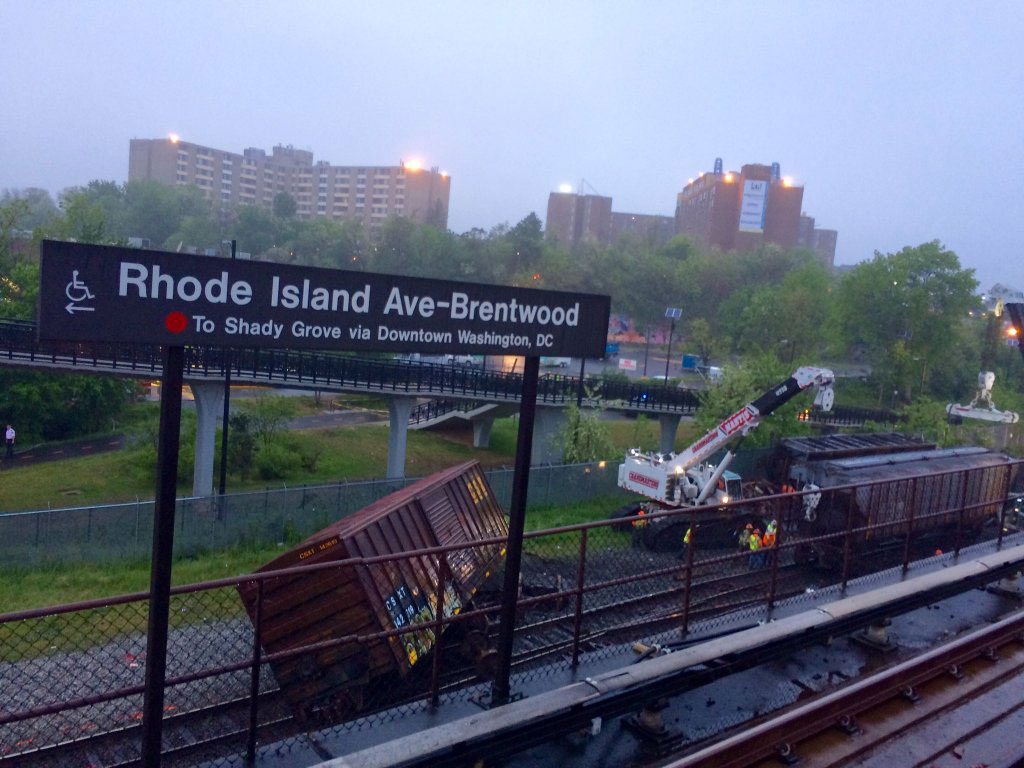
New video of CSX derailment in DC. pic.twitter.com/YiS7QE3UfM
— Mark Segraves (@SegravesNBC4) May 2, 2016
Workers removing derailment debris from tracks. #wtop pic.twitter.com/egpM9lkpeq
— Nick Iannelli (@NickWTOP) May 2, 2016
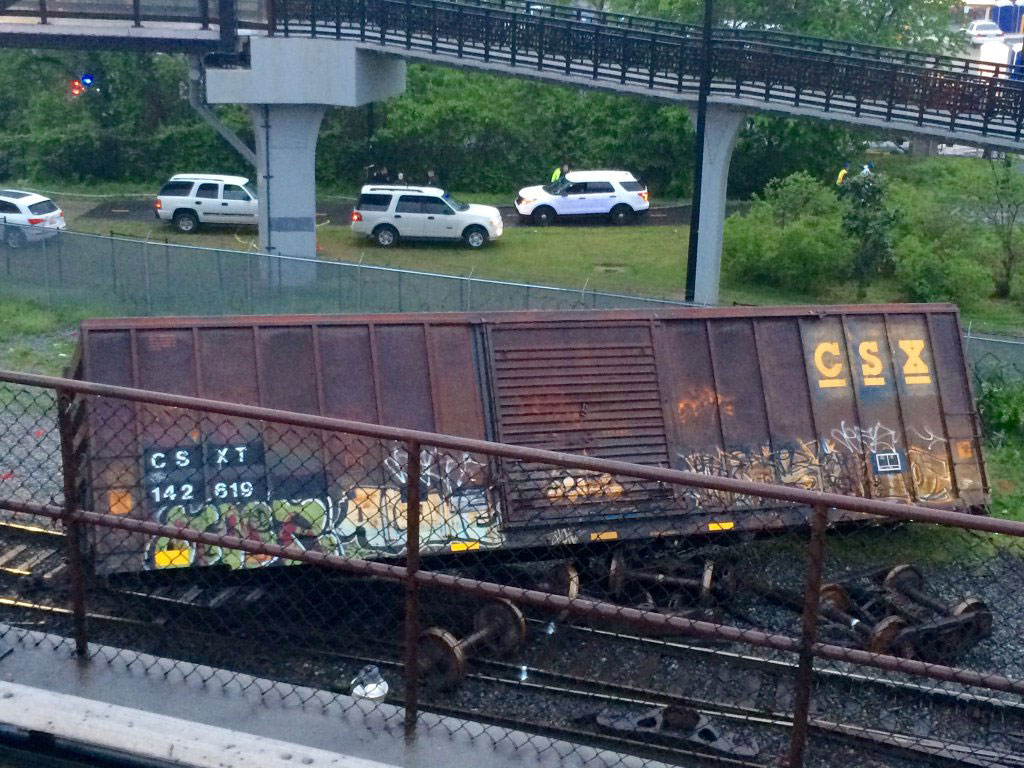
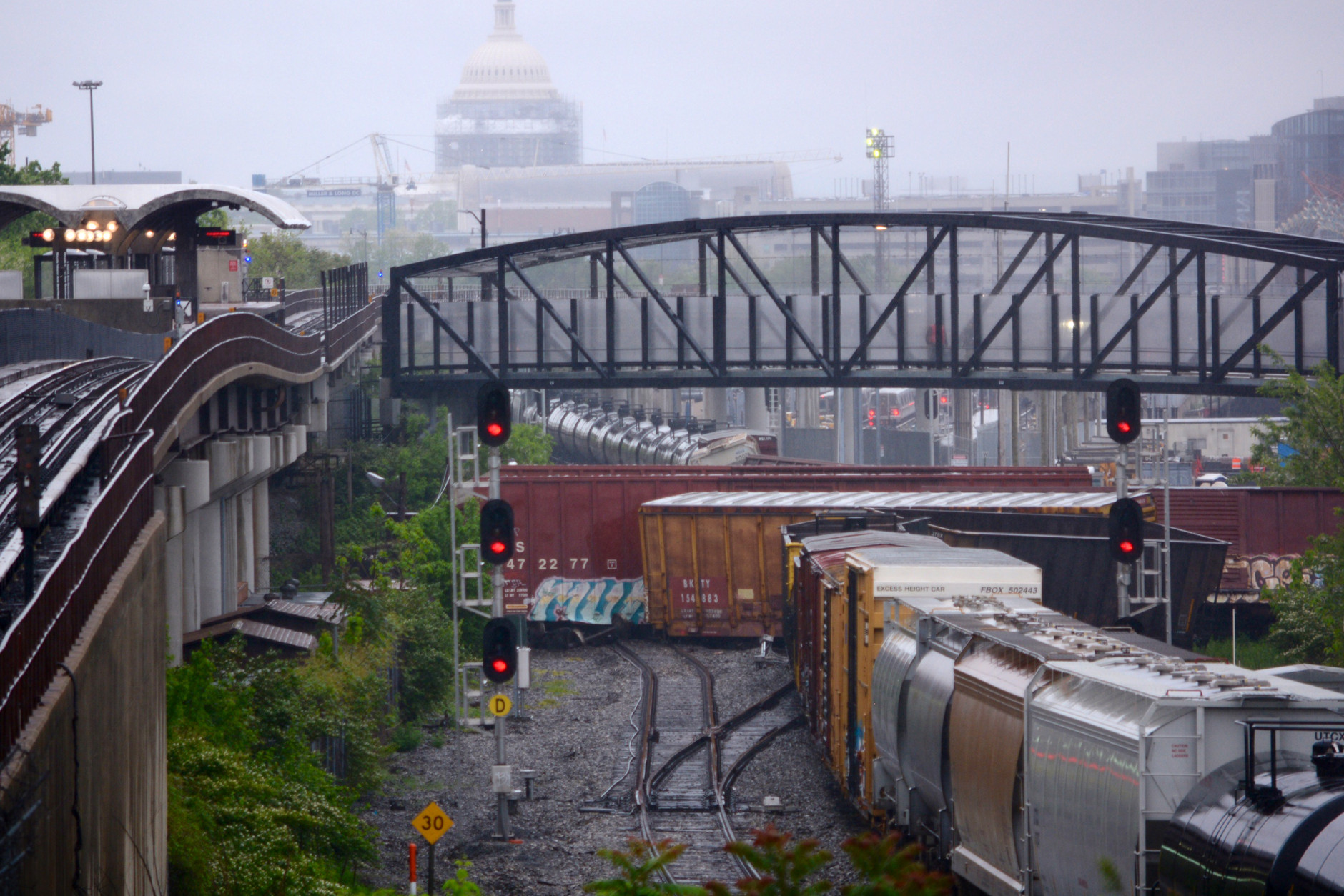
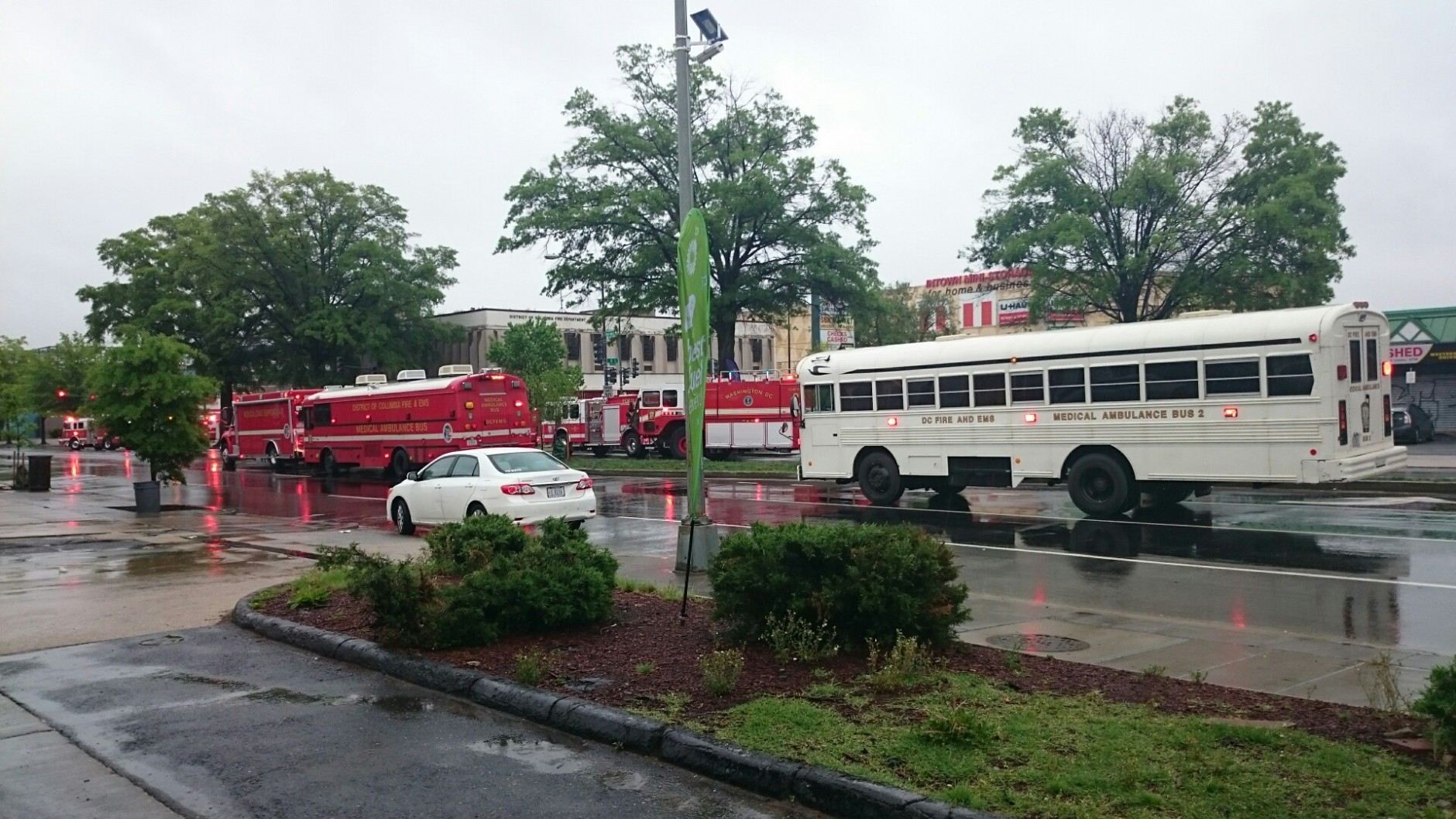
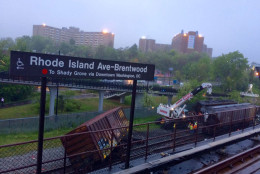
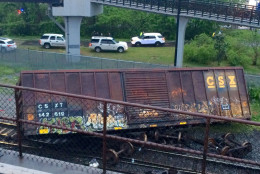
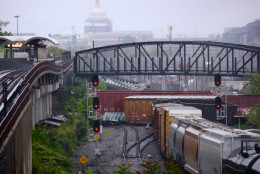
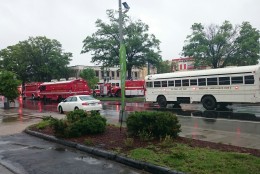
WASHINGTON — Train cars that derailed near the Rhode Island Metro Station over the weekend have largely been put back on the tracks, and workers on Monday finished offloading hazardous materials from two of the cars, CSX officials said.
CSX said Monday evening that 15 of the 16 cars that derailed have been put back on tracks in preparation for them to be moved. The final car, which was significantly damaged, will be taken away by trailer.
CSX says about 750 gallons of a 15,000-gallon load were spilled. Ethanol is considered a hazardous material and it is flammable. CSX officials did not have a precise estimate of how much ethanol spilled, spokesman Rob Doolittle said. He said the leak was stopped “very quickly … and the Federal Railroad Administration has characterized the leak as ‘minor.’”
CSX said in a statement at about 8:30 a.m. Monday that the railcars that had not derailed, and several cars that had, have been removed. The rail line has not said how long the cleanup might take. What caused the derailment is also not yet known.
After that comes the cleanup, CSX said: Digging out soil that has been affected by the spills and replacing it with clean fill. After that, new track will be laid.
The train was headed from Cumberland, Maryland, to Hamlet, North Carolina, when it derailed at about 6:40 a.m. Sunday, and 16 cars left the tracks. One tank car filled with sodium hydroxide, as well as two others filled with the nonhazardous substances calcium chloride and ethanol, leaked for several hours.
The sodium hydroxide and the ethanol were being unloaded from their respective cars so they can be removed from the derailment site, CSX said.
Metro opened on time and with all stations open Monday morning, after having closed the Rhode Island Avenue station on Sunday. However riders should expect delays in both directions due to track work between Friendship Heights and Medical Center stations.
MARC’s Brunswick Line only operated three trains Monday morning, and they all ended at Silver Spring. The same schedule will apply Tuesday. Get the full schedule on MARC’s website.
The walkway next to the station, across from the tracks, remains closed. Part of the Metropolitan Branch Trail is also closed:
Detour: Edgewood to 4th Street. 4th Street has bike lanes the entire way from Edgewood back to the trail. pic.twitter.com/1r6C6KHkwc
— DDOT DC (@DDOTDC) May 2, 2016
MARC tickets are being honored on MTA Commuter Buses. While the Penn and Camden Lines are not directly affected, MARC says Monday evening’s Penn Line trains 428 and 447 are canceled as well as Tuesday morning’s Camden Line train 844.
Amtrak ran shuttle buses between D.C. and Pittsburgh on Sunday. Spokeswoman Vernae Graham told WTOP that Amtrak will again be busing passengers between D.C. and Pittsburgh in both directions on Tuesday. Train 29 will originate in Pittsburgh and Train 30 will end in Pittsburgh.
D.C. Mayor Muriel Bowser said at a news conference Sunday evening that all leaks had been sealed. She said that there were no air-quality or water-quality problems. Sodium hydroxide, also known as lye, is used in the making of soaps, nylon and textiles, as well as food production. The Centers for Disease Control and Prevention says it can irritate or burn eyes, skin and mucous membranes.
“The safety of the community, first responders and CSX employees remains our priority,” CSX said in the statement.
They add that there are no air-quality problems related to the derailment. No injuries were reported, and no one was evacuated.
Watch a video of the derailment courtesy of WTOP’s broadcast news partners at NBC Washington:
New video of CSX derailment in DC. pic.twitter.com/YiS7QE3UfM
— Mark Segraves (@SegravesNBC4) May 2, 2016
WTOP’s Nick Iannelli and The Associated Press contributed to this report.








